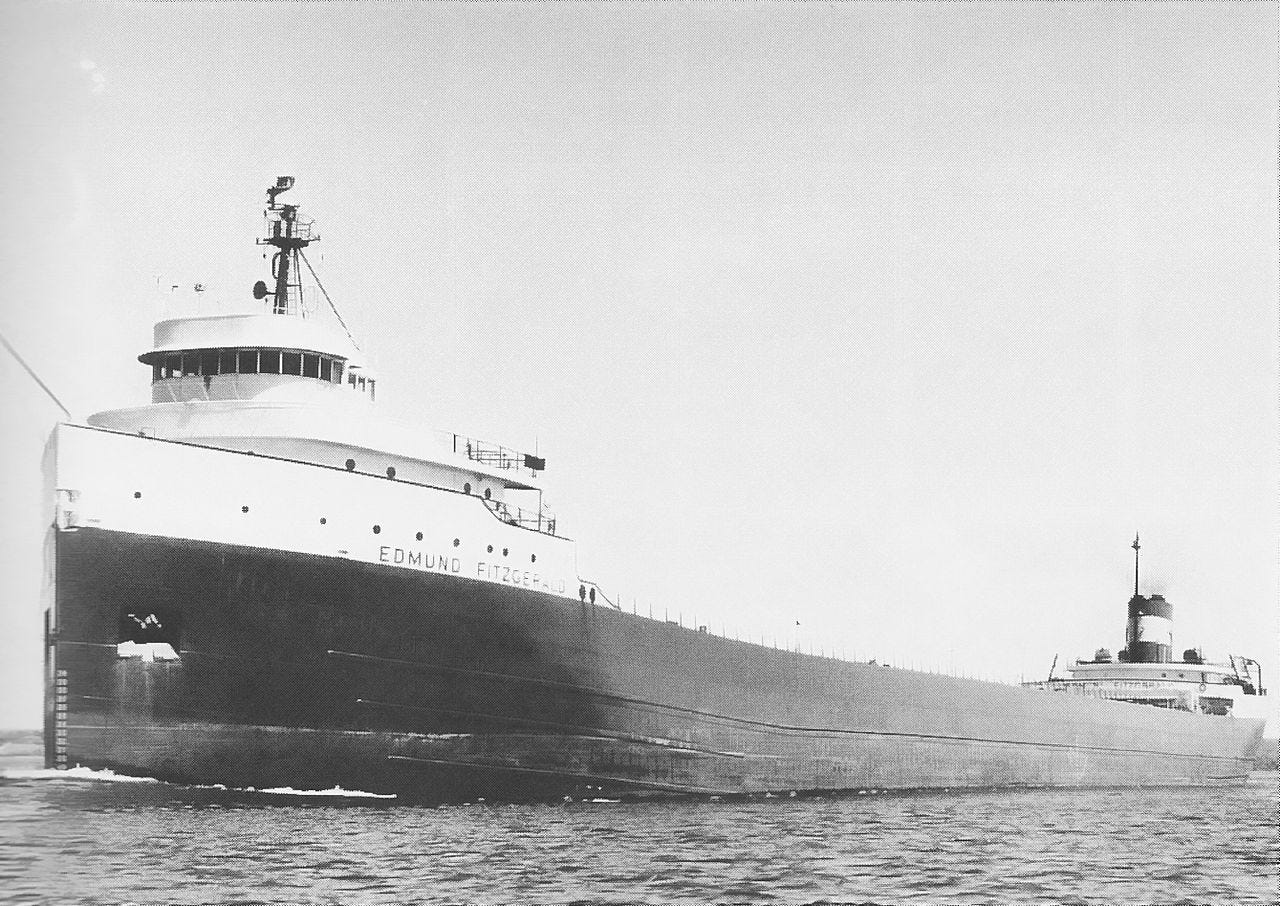I recently returned from a whirlwind trip up to Upper Michigan where I had traveled to do some manual labor for my mother and get some trees trimmed and cut down along the lake side of the house. It was an unseasonably warm Labor Day Weekend and we were blessed with warm lake temperatures and unfettered access to my aunt and uncle’s sauna to recover from the back breaking work of brush clearing.
Normally, in many places across the U.S. this type of warm weather would not be weird even in November. But, this is Michigan’s Upper Peninsula. More specifically on the giant thumb that juts out into the world’s largest body of fresh water, Lake Superior. My mind lazily drifted to what happens when you get very warm days in November up that far north, more specifically: what comes after.
Nearly 47yrs ago, the SS Edmund Fitzgerald departed Superior, Wisconsin (Duluth, Minnesota) on an unseasonably warm afternoon on 9 November 1975. By 7:10pm the next evening she was lost to the Gales of November.
Traveling northward in company with the SS Arthur M. Anderson, the two ships passed close to Isle Royale around midnight (the least visited and most remote National Park in the U.S. park system) where many ships were already taking up protective positions behind the island.
Captain Ernest McSorley, with over 40yrs of service on the Great Lakes and had been the Captain of the Edmund Fitzgerald since 1972 and was in his final season of sailing, intending to retire at the completion of this shipping season.
Both McSorley and Captain Jesse Cooper were seasoned mariners and had vowed to sail together through the inbound storm. In 1975 weather predictions were far less reliable and it is thought they didn’t have the full weather picture.
Professor Steve Ackerman has done a wonderful job in this video explaining the significance of the storm that was bearing down on Lake Superior:
In the end, the true reason behind the sinking of the S.S. Edmund Fitzgerald isn’t known completely. However, local T.V. personality and historian, Ric Mixter, does a great job exploring all the possible causes. Ric dove on the Edmund twice in the 1990’s, he’s one of the few people with actual personal experience visiting the bottom of Lake Superior to visit the ship.
Today, the wreckage site is deemed a gravesite and diving on the site in Canadian waters is tightly controlled. Being that it is fresh water and so cold, the remains of the crew are still easily found. Yearly, the Mariners Church in Detroit honor the loss of the Edmund Fitzgerald and the 29 members of her crew. It’s a somber remembrance to lives of those lost.
In the beginning the S.S. Edmund Fitzgerald was built as an investment tool by Northwestern Mutual. It was the board of Northwestern that wanted to honor their President, Edmund Fitzgerald by naming the ship after him. Edmund’s Great Great Uncle was Edmond Fitzgerald (with an O) and he had built a wooden cargo ship named the Edmond Fitzgerald. Had the board conferred with Edmund he would have emphatically denied them permission to use his name. In fact he had recommended the names Centennial, Seaway, Milwaukee and Northwestern. However the board was not to be dissuaded and they voted unanimously to name their new ship after Edmund. The S.S. Edmund Fitzgerald was christened and launched on September 22, 1958, serving faithfully for 17 years as the largest ship on the Great Lakes.
When the Edmund sank on November 10th, 1975, that marked four days and 92 years after the Schooner Edmond (with an O) Fitzgerald was lost on Lake Erie, also in Canadian Waters. She too, was trying to make one last run of the season. The first Fitzgerald was lost with 7 souls on board on November 14th, 1883.




https://m.youtube.com/watch?v=9vST6hVRj2A